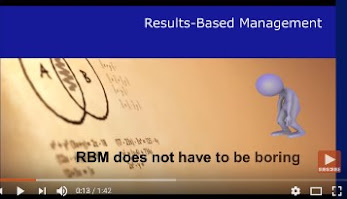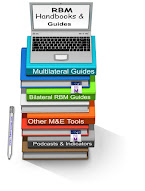[Updated August 2019]
Don’t let
the title mislead you - The Governance of Forests Initiative (GFI) Indicator Framework and the accompanying Guidance Manual published in 2013 by the World Resources Institute are practical tools not just for those working on environmental governance, but for anyone developing
indicators for the design, management or monitoring of governance projects or programmes in any sector.
Level of Difficulty: Moderate to Complex
Length: 295 pages - or downloadable as 7 discrete files by component
Languages: English
Primarily Useful For: Indicator workshop facilitators, project or programme managers
Most Useful: Guidance on data collection for 596 indicators
Limitations: These are not cut and paste indicators. The Guide provides examples of issues to be considered in data collection, but users will need to do their own work to adapt indicators to specific contexts
Background
Developing indicators for governance projects and programmes– whether democratic governance in general, or governance in specific sectors such as natural resources or the environment - always requires careful discussion and debate among those designing and managing projects, and their partners and stakeholders. .
There are usually very few shortcuts we can take in working through what potential indicators are at the same time both technically and politically valid, and practical enough to actually have collectable data. In my experience on both environmental governance and democratic governance projects, it is necessary often to start from scratch on each unique project, clarifying assumptions about what the results mean to different groups, and what is likely to be practical in terms of data collection. For projects on transparency, democratic governance, and accountability it is often counterproductive to simply adopt standard global indicators used to compare country performance on governance, and try to use them to describe specific capacity development needs of individual governance projects.
Useful publications from the World Resources Institute
I was therefore pleasantly surprised to discover, belatedly, the World Resources Institute and its publications, particularly those on The Governance of Forests Initiative. The WRI states that while it ensures that its publications meet academic standards, “We also ensure that all of our publications are timely, fit for audience, and rooted in a strategic plan for achieving positive change in the world.” Based on my reading of the indicator guidance manual, this is certainly fit for the audience of people I work with – people designing, managing , monitoring ,evaluating, and affected by governance projects – in forestry, natural resources management or any other sector.
Practical governance indicator guidance
There are
dozens of reports and guides on governance issues and governance indicators on the WRI website,
but after sorting through many of them, what I found the most useful for facilitators of indicator development workshops for people working in the field on
governance projects in a wide range of sectors is the series of publications on indicators for assessing forest governance. These were field tested over several years in Cameroon, Indonesia and Brazil, before publication.
For those wanting just an overview of the process of assessing governance, the 68-page Assessing Forest Governance: The Governance of Forests Initiative Indicator Framework might be of interest. It is, however, somewhat mislabeled I think, on the publications download page as a “full report”.
There are numerous alternatives for downloading the indicator framework and reports, a summary or individual chapters at the WRI website.
 |
| Governance of Forest Initiatives Indicator framework download alternatives [click to enlarge |
The 295-page Governance of Forests Initiative (GFI) Guidance Manual: A Guide to Using the GFI Indicator Framework , written by Lauren Williams, Jessica Breitfeller and Celine Lim, while not as pretty as the framework itself, contains, as far as I could see, both the report, and much more detailed discussion of the practical issues involved in actually using the indicators, or adapting them to project or community specific contexts. It is this document which I think will be of greatest use to people who need not just to develop governance indicators, but to specify how they will be defined and how data will be collected.
This Guidance manual is divided into two parts – an introductory section on how to conduct governance assessments, and detailed guides to collecting data on 596 indicators in part 2.
While I think the whole Guide is worth downloading as one coherent document, the website also, for those with limited bandwidth, interest or patience, provides links to 7 sections with theme-specific indicators which can be downloaded separately. The rest of this post describes what is in those sections, and in the Guide to using the indicator framework.
How to conduct a governance assessment
Principles of good governance
This 35-page introductory Part 1 of the guide discusses the principles of good governance for which it is proposing indicators, including transparency, participation, accountability, coordination and “capacity”, and four forestry themes with which they will be matched in indicator development. |
| Matching Governance Themes and Indicators [Click to enlarge} |
Those themes are forest tenure, land use, forest management, forest revenues. But the Guide also recognizes the need for indicators on cross-cutting governance institutions and cross-cutting governance issues of relevance to any sector.







